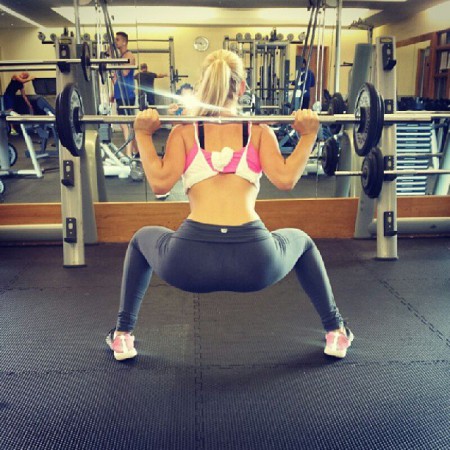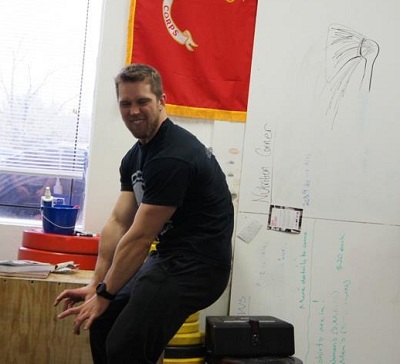 Friday I put the image to the right in the PR Friday post and asked people to explain what was wrong with it. There were a variety of good points, but I wanted to focus on the thing that stuck out to me. Before we begin, let’s all agree that the fact this girl is squatting is more important than not squatting; this concept always trumps any bickering that follows. With that being said, I teach that if you’re going to spend the time doing something, do it in the most efficient manner possible.
Friday I put the image to the right in the PR Friday post and asked people to explain what was wrong with it. There were a variety of good points, but I wanted to focus on the thing that stuck out to me. Before we begin, let’s all agree that the fact this girl is squatting is more important than not squatting; this concept always trumps any bickering that follows. With that being said, I teach that if you’re going to spend the time doing something, do it in the most efficient manner possible.
For the sake of giving this girl credit, she’s got a decent bar positioning, is trying to apply force with the lateral part of her foot (to prevent a navicular drop AKA collapsed arch which medially rotates the knee and hip), and she is probably at an appropriate depth (this picture is a weird angle). It’s possible she’s doing this weird-ass squat on purpose, but we’re gonna talk about it anyway.
As a lifting coach you’ll see many things wrong with a given lift — feet, knees, hips, trunk, shoulders, chest, elbows, grip, neck, etc. — and you can’t and shouldn’t try and correct all of them at once. Fix the thing that will have the greatest effect on the gross movement. In this case I’d start with the stance.
A wide stance inherently does not allow significant external rotation relative to foot position. External rotation allows the following:
1. It contracts the external rotators.
2. It lengthens, and therefore creates tension on, the internal rotators.
3. Therefore it creates greater tension about the hip. Tension around ball and socket joints means more stability therefore strength.
4. It maximizes the musculature used about the hip. In this case, assuming a good foot-to-ground interaction, force is more easily distributed across the lateral portion of the thigh on both the front and the back. Valgus, or knees in, knee positioning removes this area of musculature and emphasizes the medial quadriceps. As I explained last week, external rotation also allows greater posterior chain involvement, even in the high bar.
5. Externally rotating the hip prevents impingement of the femur against the anterior portion of the acetabulum (i.e. the leg bone from impinging on the hip socket). Avoiding this impingement facilitates squat depth as well as maintaining proper trunk positioning while achieving depth; squatting with knees forward will impinge the hip and posteriorily tilt the pelvis, which makes the person look like a pooping dog. Rippetoe’s “Active Hip” (it’s a pdf) article talks more about this.
When I see poor external rotation, I see a number of ways a squat can be improved, so it’s something I want to focus on. In her case, I’d narrow her stance to about shoulder width and emphasize the external hip rotation. Chances are I would not have to change much else with her, but it would be the first thing to make a habit before worrying about anything else. The first Chalk Talk episode briefly talks about cuing external rotation, but I’ll get into in a later post.


This is spot on. After my hip surgeries, I knew that a wider stance would be the key to eliminating future impingement and pressure. Wrong… As I slowly narrowed my stance, the pressure went away and I was able to squat better/easier
Pingback: CF Blog August 13 » Ultimate CrossFit Charlotte, NC
Pingback: Top Fitness Articles of the Week -- August 17, 2014 › Personal Trainer Development Center
Pingback: August 18th Monday | CrossFit Tipping Point - Norcross, GA